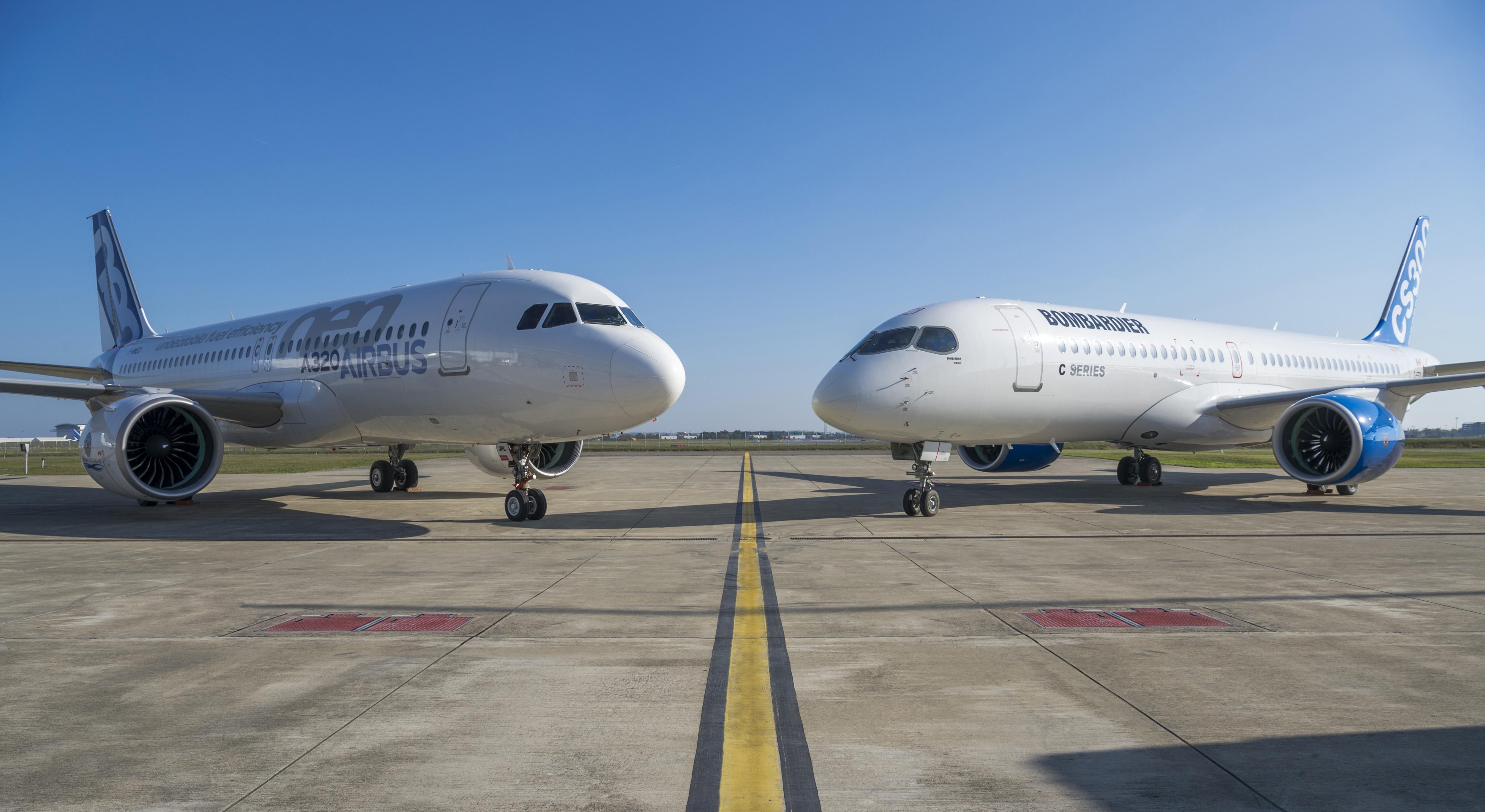The Bombardier CSeries was a great aircraft, but it did not sell so well. Sales increased significantly once Airbus took control of the program. Why did Airbus make this acquisition, and why has the aircraft been so successful after rebranding to the Airbus A220?
The Bombardier CSeries
The C-Series was formally launched at the Farnborough Airshow in 2008. It was designed to be a strong competitor in the 100-150 seat next-generation, efficient aircraft category - an area that Bombardier felt was underserved by Boeing and Airbus. Ironically, Airbus criticized the series for launching without a firm order.
Bombardier designed an excellent aircraft. It offered a composite rear fuselage and empennage, new engines, and aerodynamic developments. These brought reduced operating costs for airlines and gave passengers a spacious and quiet cabin.
Despite the excellent design and market potential, sales struggled. Bombardier only took 402 orders for the two variants over a period that lasted nearly a decade.
Read the latest Airbus news here.
Taking control
Airbus announced a 50.01% majority stake in the CSeries program in October 2017, but it was not until July 2018 that this got regulatory. This gave Airbus control of the program, with Bombardier retaining 31% and Canadian investment company Investissement Quebec holding 19%. Bombardier exited in early 2020, and Airbus' stake was increased to 75% (with Investissement Quebec holding the remainder).
The Bombardier CS100 was rebranded as the Airbus A220-100 and the larger CS300 as the A220-300. Orders increased 50% in just the first year over what Bombardier achieved in around 10 years of marketing the plane.
Adding stability and branding
So why the purchase, and why has the aircraft done so much better with Airbus? The main reason is the stability and brand that Airbus brings. Even though airlines knew the CSeries was a great aircraft, there were concerns over the security of the company. And with that, its ability to commit to and develop the aircraft.
Bombardier had struggled to make sales for several reasons. Firstly, the market situation was not helpful. With lower oil prices at the time, many airlines were looking to buy or lease older aircraft (such as the A319 or the Boeing 737) rather than buy new ones. With fewer customers, Bombardier suffered financially. In 2014, it laid off workers and restructured the company into separate business units.
Secondly, the program suffered delays, cost overruns, and early engine problems. And also, some think that Bombardier did not sufficiently market the aircraft. These factors together made it hard to sell. Not only was the market down for new aircraft, but it is also even harder to sell new aircraft when customers are unsure about your future.
Bringing Airbus onboard in 2017 was a win-win situation. It gave the backing of a larger and more trusted manufacturer. Sales would increase, and Bombardier went back into profit. The timing was right, too, with the oil price increases and more airlines looking to replace older units.
Get the latest aviation news straight to your inbox: Sign up for our newsletters today.
Competition with Boeing
Another reason for the purchase by Airbus was competition from Boeing. Delta had already made an order for 75 aircraft from Bombardier. Boeing, however, had accused the company of offering the aircraft at an unfairly low price on the US market. This resulted in plans to impose a 300% import tariff on the Canadian sold aircraft.
Once Airbus took control of the program, this sale went through without import taxes (with Airbus having a US operation), and the order was soon increased. Likewise, JetBlue was also swift to make an order.
Since then, orders have increased further. Breeze has also become a notable customer while numerous other smaller deals have arisen.
The trust in the Airbus brand has paid off as well. Airbus has already announced several major updates to the A220 family. In 2019, it confirmed plans for an increased payload and increased range, and in March 2021, the range of the -300 was enhanced further.
Looking back, the aircraft was a force in the air during the pandemic downturn. It primarily remained ungrounded, unlike many of its counterparts during the early months of the global health crisis. Its balance of economics and capacity allowed it to shine despite the challenging climate.
Plenty of prospects
The progress has continued into this year. Just this week, it was confirmed that Air Canada has boosted its A220 order to 60 jets. This move follows recent orders from the likes of Croatia Airlines and increases from Delta and JetBlue. In 2022 alone, there have been 105 orders for the A220.
There are additional opportunities for the program, including opportunities for a larger version of the A220. This summer, Airbus Chief Executive Guillaume Faury noted that a bigger edition will make sense at the right time.
The A220 has become a fan favorite among operators and passengers alike. Its presence as the only type in airBaltic's fleet is a case study of how it can be relied upon as a comfortable, efficient vessel on short-haul routes.
What are your thoughts about the overall program? Have you flown on the aircraft over the years? Let us know what you think in the comment section.
What do you think of the Bombardier C-Series and its re-launch by Airbus? What about the prospects now for Bombardier?
Source: FlightGlobal

.jpg)

